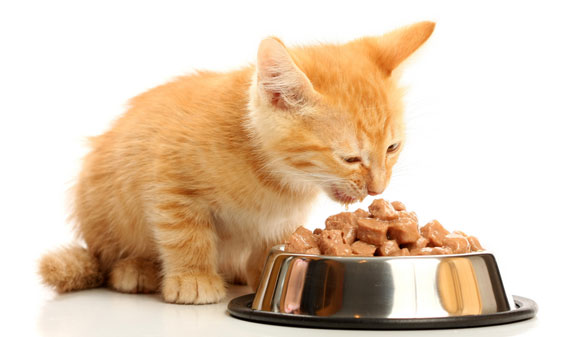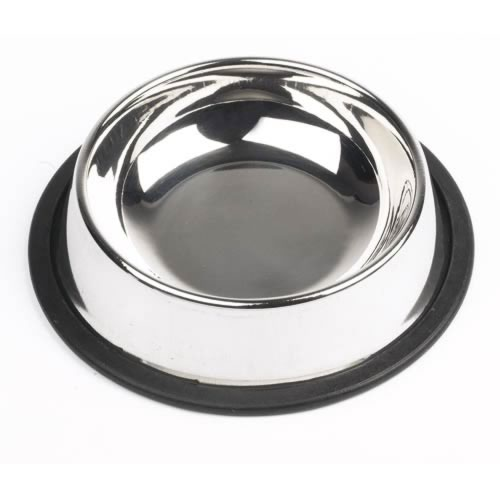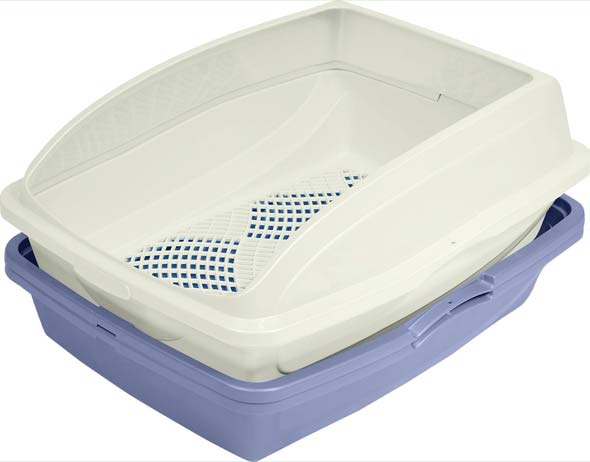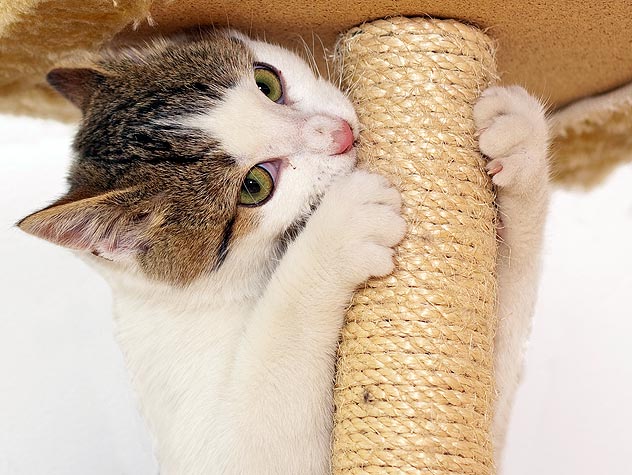Today, the number of cats kept as pets in Canada outnumber dogs. they are easier to take care of than dogs, they can be left alone for greater lengths of time and they require less space. It is estimated that almost half the people who own a dog also own a cat, showing that there is natural animosity between dogs and cats.
Once you have chosen your new kitten, be sure that you receive all the required health records pertaining to your new pet. This should include the dates of inoculations, the types of serum given and the record of wormings the kitten has received.
Introduce the kitten to the family members and other pets as slowly as possible so as to eliminate additional stress. Take the kitten to the veterinarian as soon as possible for a complete check up. Bring the health records and a stool specimen. You should also purchase those necessary items for the general maintenance of your new pet.

The brand of food your kitten has been eating should be purchased at the same time you bring your kitten home. A new home, which is totally new and challenging to the kitten, is stressful enough without drastically changing the diet as well. A complete change in the diet can result in diarrhea and be a strain on the system. If you do decide to change the brand of food the kitten has been eating, feed him the old food for at least a week and then gradually change the brand of food by mixing it with the old. This process should be done over the course of at least a week. Place both the food and water dishes in a location that the kitten will have easy access to, but away from areas where other pets might eat the food or drink the water. The food and water dishes should be made for cats, because cats do not stand, as dogs will do, while eating. They should be low to facilitate their eating and drinking habits.

Clean, fresh water should always be available, especially if the kitten is eating a diet consisting of dry food. BED: Special hutch type beds are made for cats to provide them with the security they need. Usually just placing the kitten in the bed is all that is necessary for him to know that it is his sleeping area.

Purchase as large a litter pan as you feel comfortable with. Generally, the larger the litter pan is, the more likely a cat is to use it. Cover the bottom with about 3 inches of cat litter. Your new kitten will not know where the litter pan is unless you show it to him. Like the food and water dishes, it should be located in a quiet area of the home, away from the other pets. Gently carry your kitten to the litter pan and rub his front feet in the litter in a scratching motion. Most of the time only one lesson is necessary but this can be repeated if necessary. Cats like privacy and confined areas, so litter pans have been designed that are covered to offer the cat complete privacy. Some of these come with odour reducing filters.

For years, clay litter has been used in cat litter pans. This is generally inexpensive and easy to use. Some are more dusty than others so a good brand will usually cost a little more. Clay litter is available with or without deodorizers. New granule type litter is now available. This litter (sometimes called scoopable or clumping) is less bulky than clay, but serves the same function. This litter forms a ball when moisture hits it and is somewhat easier to clean. These are also available in scented and unscented varieties. Litter pan liners are also used to keep the inside of the box cleaner and make cleaning the box easier. A litter scoop should be used to remove solid wastes from the litter. This should be done as often as possible, depending on the number of cats in the home.

In order to prevent the kitten from strengthening his claws on your furniture, a scratching post should be provided. If the kitten is seen clawing the furniture, shout "no" in a loud voice or clap your hands to stop him. Show him the scratching post and reward him verbally for using it. Kittens may use a scratching post more readily if there is a toy attached to it. Adult cats can be taught to use the scratching post if some catnip if spread around the base.

New kittens should learn to accept brushing on a regular basis. This will help reduce the possibility of hairballs and help keep the coat shiny. A brush made specifically for cats and a steel comb are necessary. As the kitten gets older, you may wish to purchase a hairball remedy to help eliminate any hairballs that have formed as a result of the cat's natural tendency to groom himself.

Kittens are extremely playful animals. The addition of toys will make them more apt to play and provide them with diversions that will avert boredom. Some toys contain catnip, which may be unnecessary when they are given to kittens. Some toys can be as simple as a paper bag, a cardboard box, or a marble in an empty tissue box.
Special cat furniture can be purchased to provide your kitten with a place to play, hide and sleep. This furniture is generally carpeted and some are tall. The kitten will enjoy a great sense of security in them. There are special types of plants that can be grown for cats and kittens to eat. These come in their own packages and all you have to do is add water. These will help in preventing the kitten from chewing on house plants. Keep in mind that certain house plants are toxic to cats.
As a rule, cats do not like water but should it become necessary to give the kitten a bath, use only a shampoo designed for cats or kittens. Do not use human shampoo. Make sure the kitten is dried thoroughly and avoid any drafts.
Cats and kittens have been described as aloof, but their quiet companionship is welcomed by young and old alike. Their purring, when contented, is a soothing sound, showing the love and affection they have for their owners.

 NEW REMOTE TRAINING COLLAR
NEW REMOTE TRAINING COLLAR
 Q HOLISTIC DOG FOOD 2.7KG
Q HOLISTIC DOG FOOD 2.7KG
 RUFFIN'S CHOICE NATURAL PREMIUM DOG FOOD 13.6KG
RUFFIN'S CHOICE NATURAL PREMIUM DOG FOOD 13.6KG RUFFIN'S CHOICE NATURAL MAINTENANCE DOG FOOD 13.6KG
RUFFIN'S CHOICE NATURAL MAINTENANCE DOG FOOD 13.6KG



